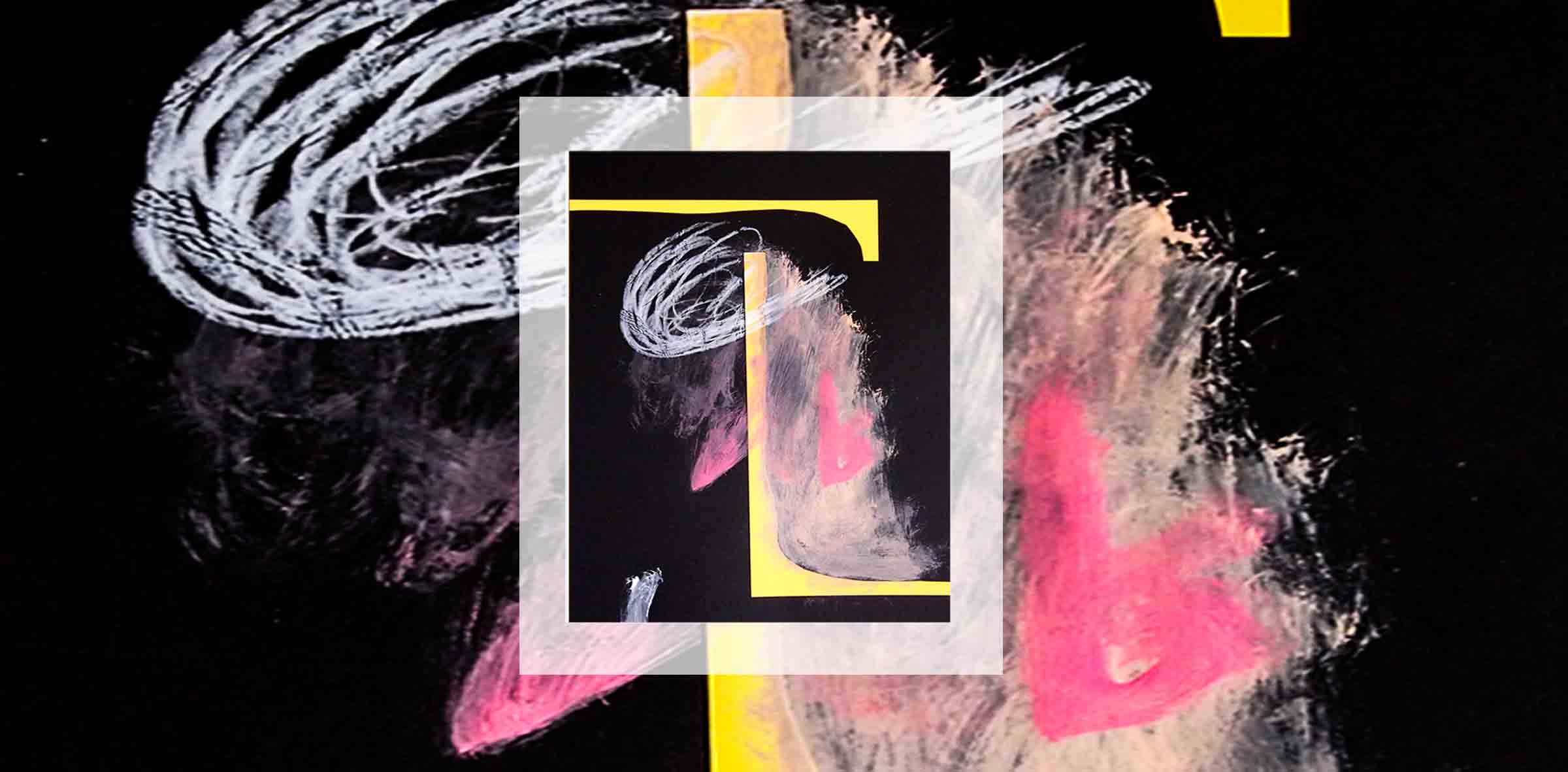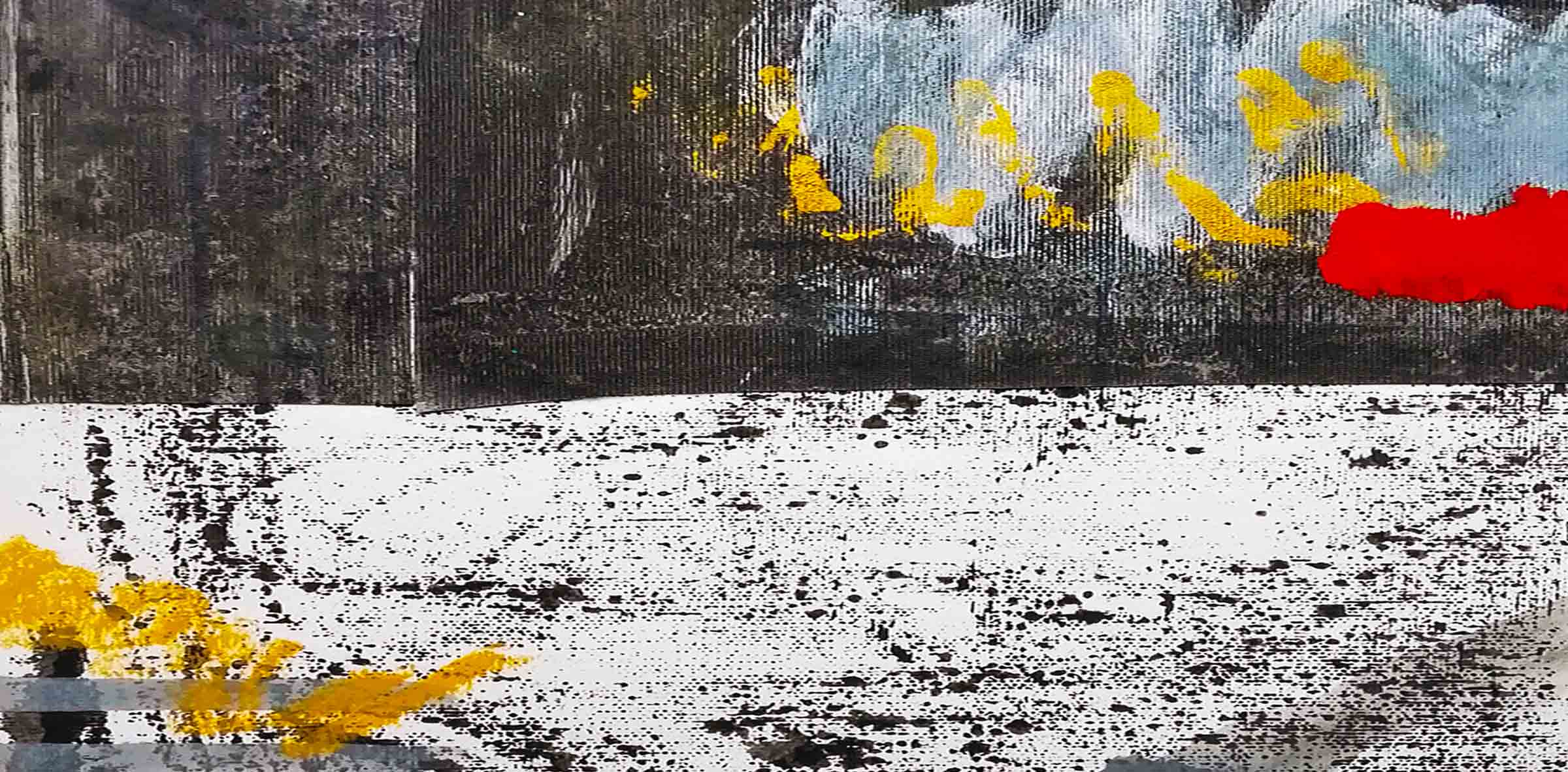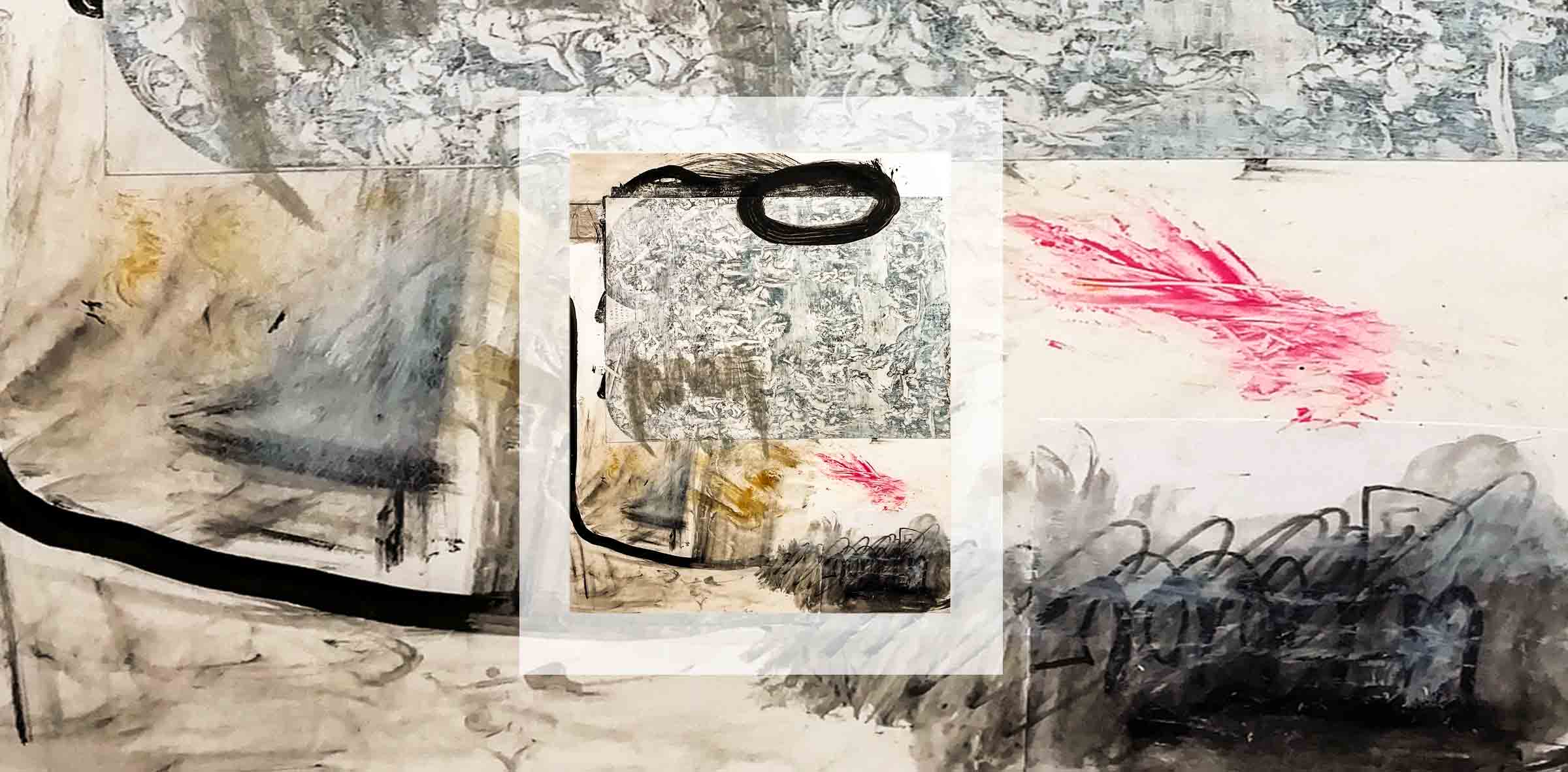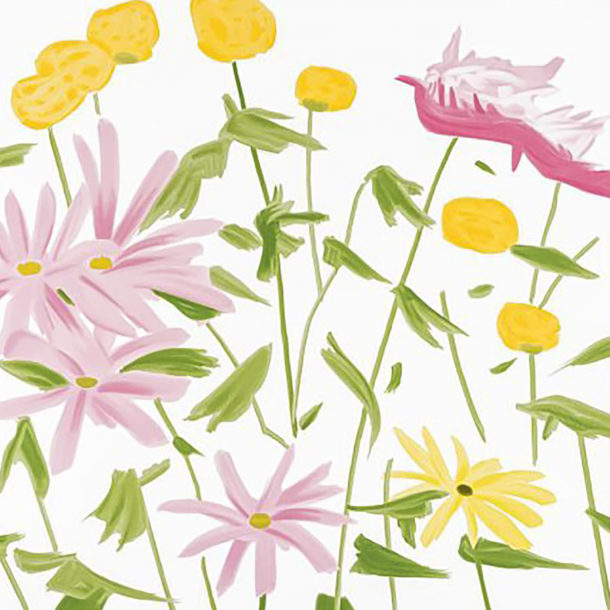“I see them as shapes and gestures existing without any boundaries.” Alessio Guano.
Alessio Guano Italian visual artist from La Spezia, talks to us about his process ‘playing with words and their meaning.’
To begin at the beginning. Was there a damascene moment when you decided – or knew you had to be an artist?
I can’t remember the exact moment when I decided to become an artist but I’ve been fascinated by painting since I was a child. In my old house, we had several works hanging on the walls. Although the quality was quite poor and their colours dull, those old landscapes appeared to me as fantastic worlds in which it was possible to create stories with distinct characters. When I was a kid, I loved drawing and smearing white walls with colours. Eventually, my parents grew tired of repainting everything and decided to use washable paint on one of the walls of our house, giving me room to express myself. I consider that wall my very first canvas.

‘Lights in the Night.’ Detail.
Can you tell us a little bit about the process of making your work, we love process.
I believe that the process of making art is personal. The artist should always be prepared. Inspiration can come from any source, and strike at any time. My process usually starts with the preparation of materials and colours. Then, I try some ideas in a sketchbook and keep them on standby. An idea needs time to ‘breathe’. I work on it ‘backwards’, adding to or subtracting from the original idea. Some of my paintings have been cut into strips and then stitched or glued together so that they can be presented in a unique pattern.
“They bear evidence of their previous life as recycled paper, old drawings and photographs.”
My latest artworks, which have been selected for my collection in the UK are drawings and refer to an ‘existence on a boundless space’. In other words, I see them as shapes and gestures existing without any boundaries. They are part of a complex introspective work.
Is there a piece you’ve created that you’d like to be remembered for, for all time, or even longer?
I would like to be remembered for what I have not done yet. The type of art that is still in one of the ‘drawers’ of my mind!
If you could work within one past art movement, which would it be. And why?
I think it would be Dadaism and the first surrealist period. Those movements spanned visual, literary, and sound media, such as collage, sound poetry, cut-up writing, and sculpture. Dadaist artists challenged accepted definitions of art by playing with words and their meaning. That kind of belief dictates the way I am as an artist.
How would you define beauty in 140 characters or less. N.B. There is no correct answer.
Will beauty save the world? This is the question that we should ask ourselves often. Fyodor Dostoevsky, in his novel masterpiece The Idiot, affirms it but I continue to ask the question. I perceive beauty as vital rhythm, colour, joy of living. Beauty is appreciating small, daily gestures. Beauty, in my opinion, is not just a combination or arrangement of qualities that gives the observer pleasure. An object, a landscape, a person or a living thing is beautiful because they contain an ephemeral soul.
“Beauty, for me, is the constant search for harmony and balance.”
A beautiful flower or a beautiful person would still be beautiful even if they weren’t observed.
Do you have a favourite photograph or painting which has been your inspiration?
It’s a hard question. It is not easy to choose from a whole world of works of art. Among contemporaries, I love the intimate drawings and sketches of Basquiat and Rauschenberg. In photography I love the Italian Luigi Ghirri and the “super artist” Man Ray. His rayographs are nothing short of amazing!
How does the culture of where you live or work impact on your work?
As a wise viewer, every artist is influenced by their heritage and culture: even if their artwork is contained in their studio, their imagination has the chance to visit different countries and take other cultures into consideration. I feel lucky, because Italy offers a wide range of cultures. I personally believe I do not need to travel that much to find inspiration!
Tell us about your colour palette.
Colours are a state of mind. They represent a metric unit of your imagination. My palette is not influenced by my surroundings. Rather, I would say that it depends on an introspective research. Since I am attracted to simplicity, my palette is not an over-complicated one and is composed of simple mixed colours. I believe simplicity is the key to “feel” colours.
Which artist or artists would you most like to meet? And do you think you’d get on?
Rrose Sélavy!
Do you interact with technology in your work?
Of course. I often prepare and digitally elaborate my works. I think it may be an interesting starting point for many artists.
What do you wish every child was taught in school, at home, in life?
Pablo Picasso once said: ” All children are artists; the problem is to remain an artist as we grow up”. I truly believe that children should be taught the desire to remain children and never forget about it.
Have you ever held your head in your hands and questioned your career entirely?
If you mean do I question what I do, yes. Constantly. An artist must question themselves and try to be as critical as possible. They must be able to distinguish a good thing from a bad one, a good work from a bad one.
Do you love what you do? And does it love you?
Absolutely, I do!
SEE COLLECTION→



